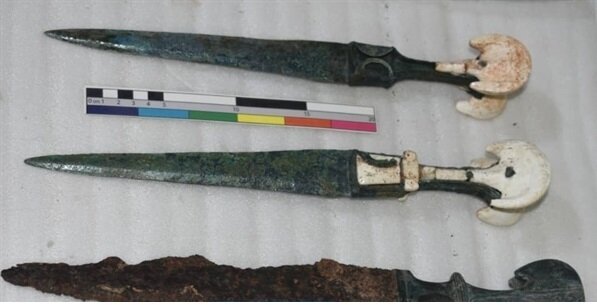Bronze daggers restored in Lorestan

TEHRAN –Three ancient bronze daggers in western Lorestan province underwent some rehabilitation works, deputy provincial tourism chief has announced.
The daggers, which were discovered during several excavations from an archeological site in the Sangtarashan village, were restored by cultural heritage experts in a laboratory in the Sassanid-era Falak-ol-Aflak Fortress in Khorramabad, Zahra Baharvand announced on Thursday.
Two of the daggers have bronze handles and blades, and are decorated with stone, while the third one has a bronze handle and an iron blade that was severely damaged, the official added.
The restoration project aimed at removing the rust, cleaning and preserving the daggers, she explained.
Luristan [Lorestan] bronzes is the accepted term for a distinct body of metalwork produced in the first half of the first millennium BC and characterized by a wide range of idiosyncratic forms and a highly stylized conception of human and animal representation.
The term refers to the small cast objects decorated with bronze sculptures from the Early Iron Age, as well as a great number of ornaments, tools, weapons, horse-fittings, and a smaller number of vessels and those found in recorded excavations since the late 1920s in Lorestan and Kermanshah provinces.
The ethnicity of the people who created them remains unclear though scholars believe that they were created either by the Cimmerians, a nomadic people from southern Russia who may have invaded Iran in the 8th century BC, or by such related Indo-European people as the early Medes and Persians, possibly related to the modern Lur people who have given their name to the area.
ABU/AFM

Leave a Comment